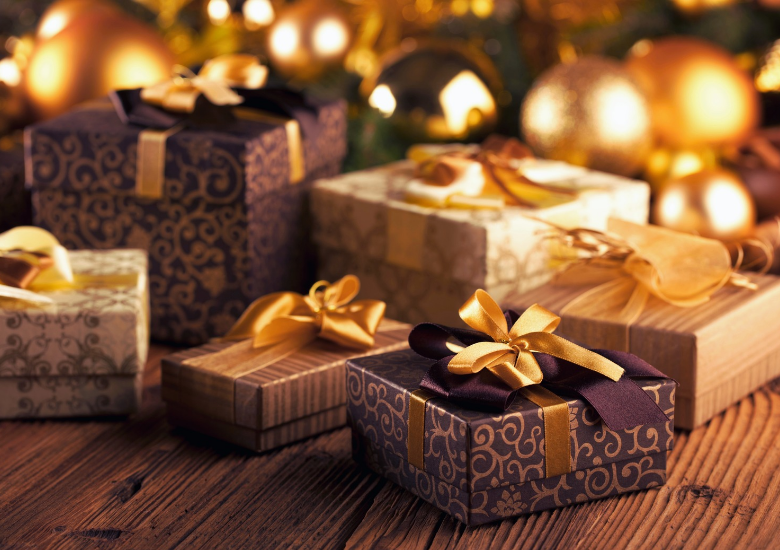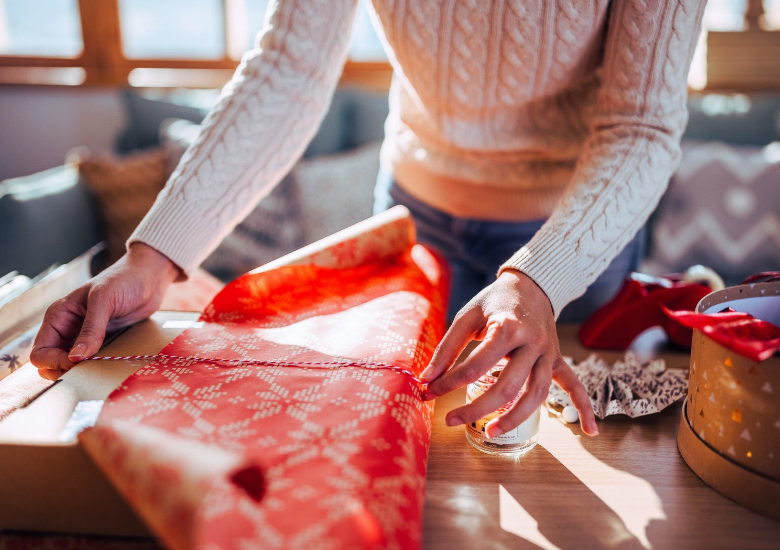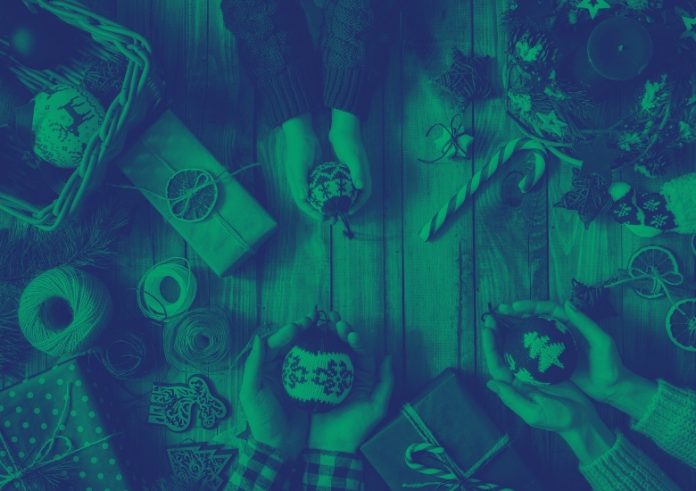Have you ever wondered how gift giving became part of Christmas? It’s actually a blend of older festivals, stories from history, and a bit of cultural remixing over time.
Way before Christmas was even a thing, ancient Romans were already swapping small gifts during their festival called Saturnalia. That was a late-December celebration for Saturn, the god of farming. People gave wax candles to symbolize light returning, or small clay figurines called sigillaria on a day known as Sigillaria. It was a festive, wild time when social rules were flipped on their head.
As Christianity spread, early leaders didn’t just ditch those traditions. Instead, they blended them with new meaning. Gifts began to connect to the story of the Three Wise Men bringing gold, frankincense, and myrrh to baby Jesus.
At the same time, stories of Saint Nicholas, a fourth-century bishop, grew in popularity. He’s most famous for secretly helping a family in need by giving gold to secure dowries for their daughters. That act, and others like it, built his reputation as a generous, gift-giving figure.
Over centuries, those threads merged into what we now think of as Christmas gift traditions. Early on, people in parts of Europe gave gifts on Saint Nicholas Day (around December 6), or even after New Year’s. But by the 1800s, thanks in part to the popularity of the poem “A Visit from St. Nicholas” (also known as ‘Twas the Night Before Christmas), modern ideas of gift giving on Christmas Eve or Christmas morning began to take hold.
So now when we hang stockings or wrap presents under the tree, we’re tapping into gift traditions that go way back—before even the idea of Christmas—blended with medieval legends and a dose of nineteenth-century charm.
Cultural Gift Traditions Around the World
Let’s wander across the globe and see how different places put their own spin on Christmas gift giving. Some of these customs are fun, some are surprising, but they’re all meaningful.
Italy
Gift day isn’t always December 25 there. On January 5, the witch-like La Befana flies around delivering candy and small toys to well-behaved kids, and coal (which might really be black sugar) to those who’ve been naughty.

Japan
A tradition that feels totally new-school: families often eat KFC for Christmas dinner. That started in the 70s after a savvy ad campaign. Now people pre-order their holiday chicken months ahead to make sure they get their bucket.
Ukraine
Instead of regular ornaments, it’s common to see trees decorated with sparkling spiderweb-like strands. The story goes that spiders once decked out a poor widow’s tree all on their own, and it ended up looking beautiful and lucky.
Iceland
They have what’s called the “book flood.” New books drop just before Christmas and people buy them as gifts, then cozy up on Christmas Eve with hot chocolate and read through the night.
Venezuela
In Caracas, people roller-skate to Christmas Mass. The roads actually close so families can skate down to church safely. Some kids even sleep with a skate lace tied out the window watching for a tug from a friend come morning.
Germany and Czech Republic
In both countries, kids open a little door on an Advent calendar each day leading up to Christmas and find chocolate or a small toy behind it. It makes the countdown to the big day feel extra special.
Sweden
Swedes play a gift-giving game called julklapp, which means “Christmas knock.” Someone quietly knocks, drops a gift inside, and runs away. The gift is wrapped in many layers, and sometimes all you find inside is a clue pointing to where the real present is hidden.
Spain
Single women toss a shoe out the front door around Christmas. If it lands toe-first toward the house, legend says they’ll be married within a year. If it lands toe-first away, it’s best to toss again next year.

The Evolution of Modern Christmas Gift Giving
Let’s talk about how Christmas gift giving turned into the thing we know today—heaps of shopping, shiny wrapping, and wrapping paper galore.
Back in the Renaissance, gift giving became a more personal and thoughtful affair. Instead of big displays of wealth, people started giving special items like books or artwork. That shift really set the stage for how we give and receive gifts today.
Fast forward to the Victorian era and you’ll see this shift take off. People began placing a lot more meaning on small, sentimental presents. That’s also when wrapping gifts became cool. Instead of basic paper, folks started paying attention to how the gift looked on the outside.
Then the industrial revolution changed everything. Suddenly gifts weren’t luxuries—they were mass-made. And that made giving gifts a whole lot more accessible.
The image of Santa Claus helped push things even further. He grew from old legends into this jolly, white-bearded guy in red whose whole job seemed to be handing out presents. That message got picked up by advertisers and spread like wildfire.
By the 20th century, Christmas had become a massive commercial event. Stores rolled out holiday window displays, malls got packed, and gift giving became a huge part of shopping culture.
Now we’ve added the internet to the mix. Online shopping, wishlists, digital gift cards—these are just as much part of the holiday scene as unwrapping something under the tree.
But even with all the fuss about deals and decorations, at its heart, giving a gift is still about showing you care. That part never changes.
The Symbolism Behind Christmas Gifts
When you strip away the shopping lists and sales, giving gifts at Christmas still carries a lot of meaning. At the core, it’s all about generosity, connection, and thoughtfulness.
One of the oldest symbolic ties goes back to the story of the Three Wise Men. They brought gold, frankincense, and myrrh to the newborn Jesus. Those gifts weren’t random. Gold symbolized kingship, frankincense was tied to worship, and myrrh represented healing and even mortality. That story shaped how people connected the act of giving with deeper meaning.
Beyond religion, the idea of exchanging gifts is really about showing love and gratitude. A wrapped present can symbolize appreciation for someone’s role in your life or a way of saying “I was thinking of you.” Even something small can carry that weight.
In many families, gifts also stand for togetherness. Parents watch kids light up as they open a toy. Friends laugh over silly or sentimental exchanges. Couples might share a gift that becomes a memory they look back on for years.
And then there’s the act of giving itself. Choosing something thoughtful can represent the joy of putting someone else first. That simple gesture connects people in a way that feels bigger than the item in the box.
So while the wrapping paper and bows are fun, it’s the meaning behind the gift that makes the tradition last.
Modern Twists on Classic Gift Traditions
Even though gift giving at Christmas is rooted in old customs, families are always putting a modern spin on it. Some of these newer twists focus on sustainability, while others reflect how our lifestyles have changed.
One of the biggest shifts has been the rise of experience gifts. Instead of giving things, people are booking cooking classes, concert tickets, spa days, or weekend getaways. These kinds of gifts focus on making memories rather than adding more stuff around the house.
Digital gifts have also become part of the mix. Think subscriptions to streaming services, online courses, or gaming credits. They can be delivered instantly, which makes them perfect for last-minute shoppers.
On the eco-friendly side, more families are turning to sustainable wrapping. Reusable cloth wraps, recycled paper, or even creative options like wrapping gifts in scarves or tote bags are becoming popular. It’s a simple way to cut down on holiday waste.
Charitable giving is another modern twist. Instead of exchanging big gifts, some families pool money to donate to a cause they care about. Others “adopt a family” or buy gifts for children in need. It’s a way to keep generosity at the heart of the season.
And of course, gift cards remain a steady favorite. Some see them as impersonal, but for many they’re a chance to let someone pick exactly what they want.

The Role of Gift Wrapping in Christmas Traditions
Unwrapping a present might be just as exciting as the gift inside. The crinkle of paper, the pop of a bow, or the reveal of a neatly folded corner adds to the magic. Wrapping gifts has become such a central part of Christmas that it is hard to picture the holiday without stacks of shiny packages under the tree.
The tradition really took off in the Victorian era, when gifts started to be exchanged more openly rather than in private. Wrapping became a way to make a present feel extra special and to build a sense of surprise. Early wrapping wasn’t the glossy paper we know today. People often used plain paper or cloth, sealing it with string or wax.
By the early 1900s, department stores helped wrapping evolve into more of an art form. In 1917, the Hall brothers were the first to sell tissue paper for gift wrapping during the Christmas shopping season. They offered gift-wrapping services, often with decorative papers and ribbons.
In the 1920s, colorful printed wrapping paper became widely available, and suddenly gifts looked as festive on the outside as they were meaningful on the inside.
Today, wrapping has become almost as creative as the gifts themselves. Some people go all out with intricate folds, handmade bows, or personalized tags. Others take a sustainable route, using cloth wraps, recycled paper, or even things like tote bags and scarves.
Gift wrapping turns the simple act of giving into a little performance. It heightens anticipation, adds personality, and makes the holiday morning feel like an event. For many families, the sound of tearing paper is one of the most joyful parts of Christmas day.
How Christmas Gift Traditions Bring People Together
At the end of the day, Christmas gift traditions are less about the items themselves and more about the connections they create. The act of giving and receiving turns into a shared experience that builds memories year after year.
For families, it’s watching kids light up as they tear into wrapping paper, or laughing together during a White Elephant swap. For friends, it might be exchanging small, thoughtful gifts that show how well they know each other. Couples often use gift giving as a way to mark milestones in their relationship, creating keepsakes they’ll look back on for years.
Communities also come together through gift traditions. Toy drives, Secret Santa programs at work, or church-based giving trees remind people that generosity can extend well beyond their own household.
Even the little rituals matter. Hanging stockings, sneaking gifts under the tree at night, or simply taking turns opening presents all become the glue that holds holiday memories in place. These shared moments are what give the season its lasting warmth.
In the end, the real value of Christmas gifts isn’t in the wrapping or the price tag. It’s in the joy of making someone feel cared for, appreciated, and connected during the most festive time of the year.





